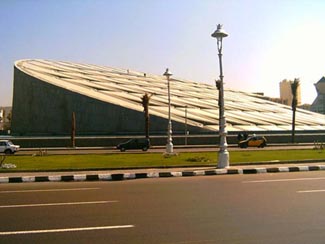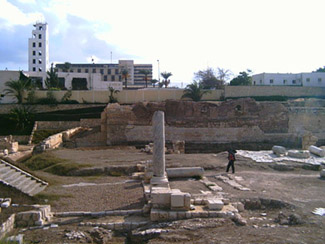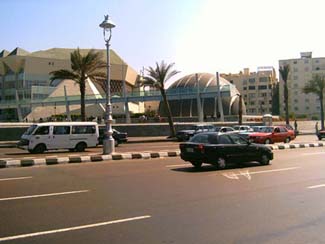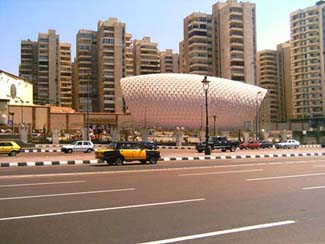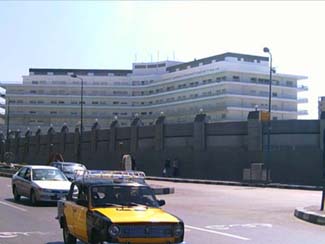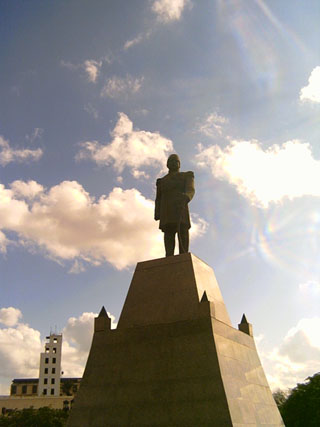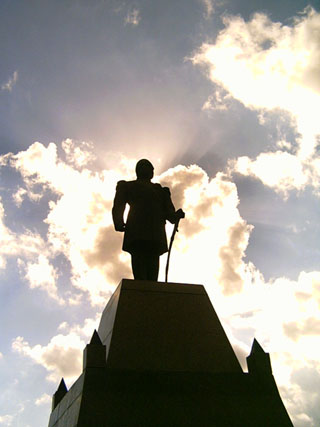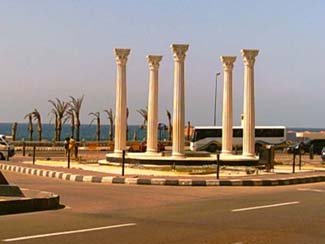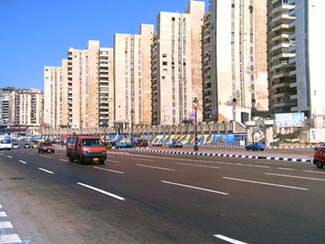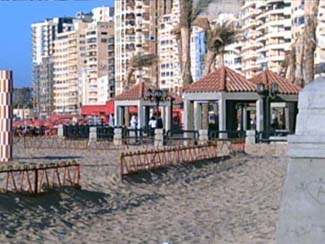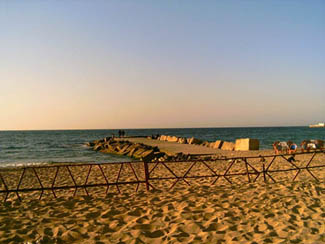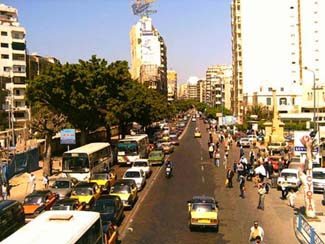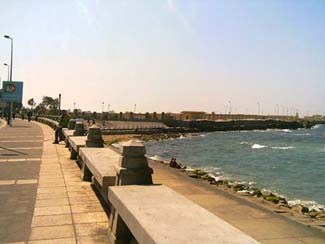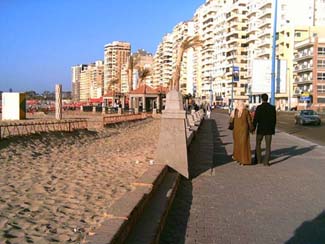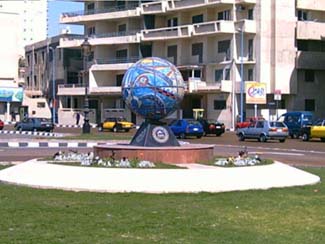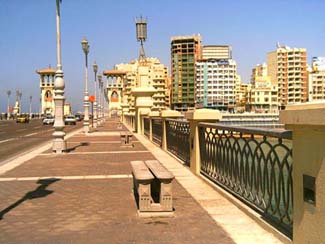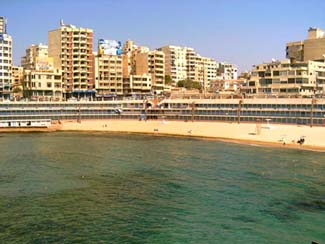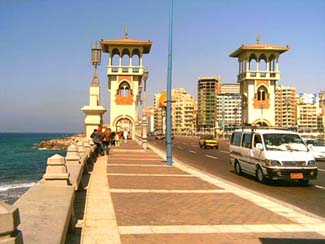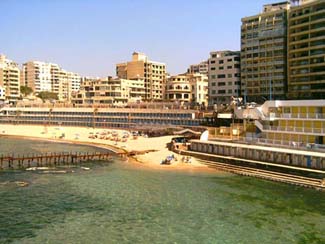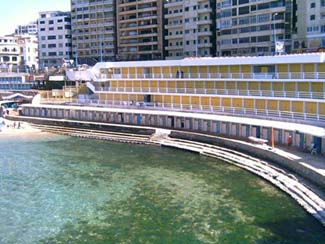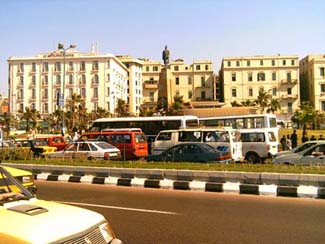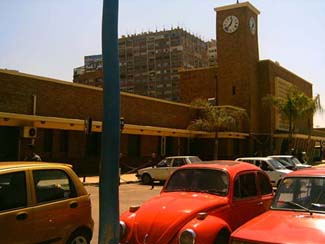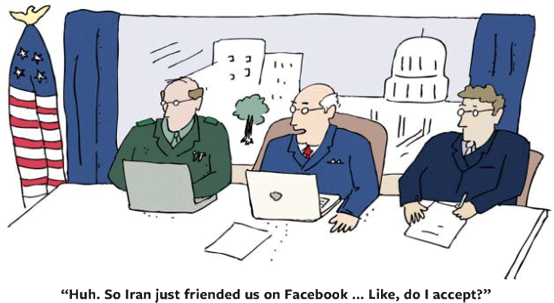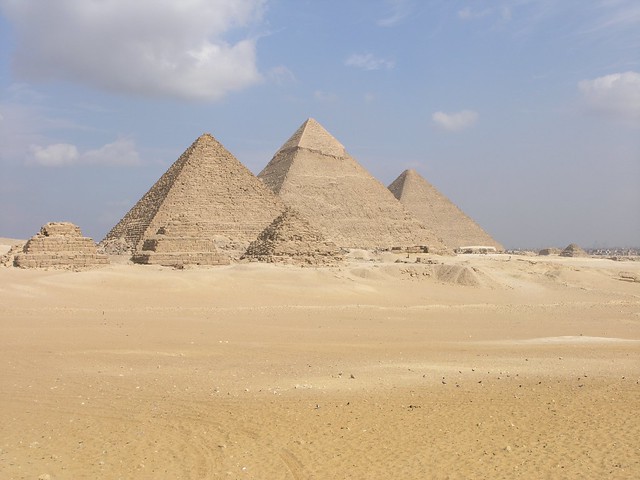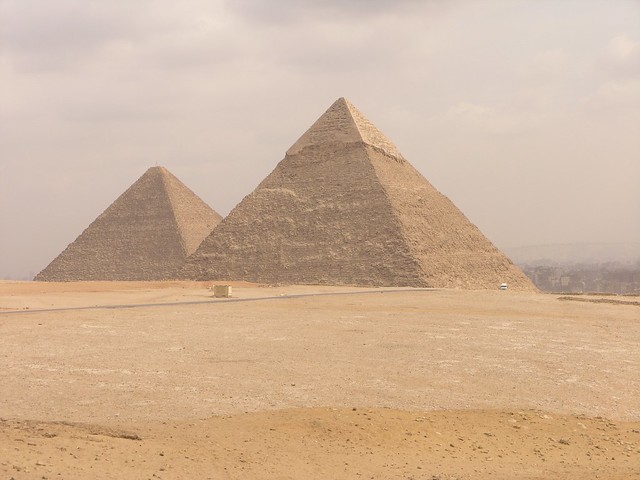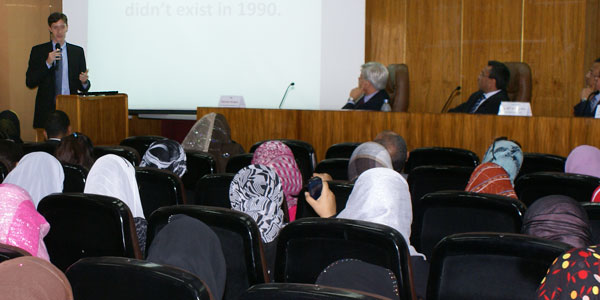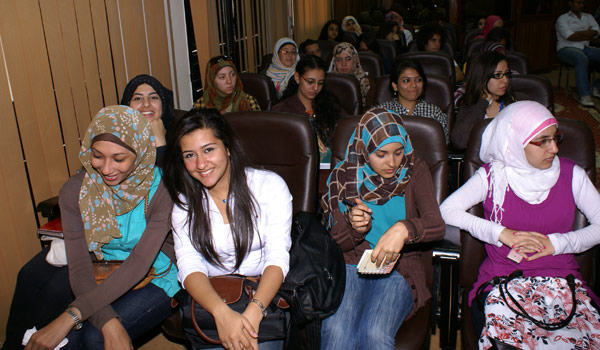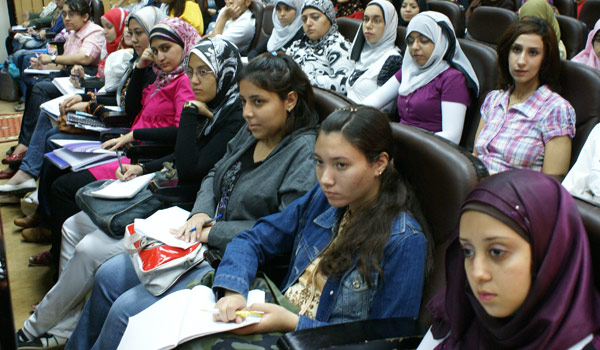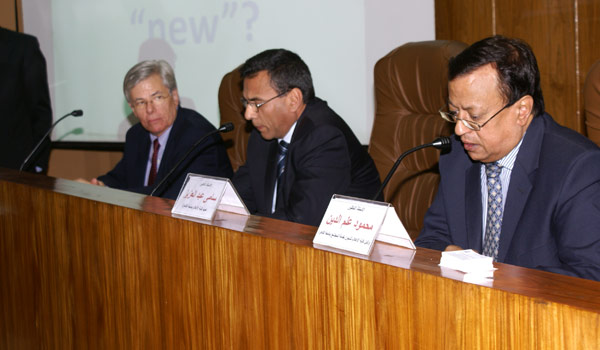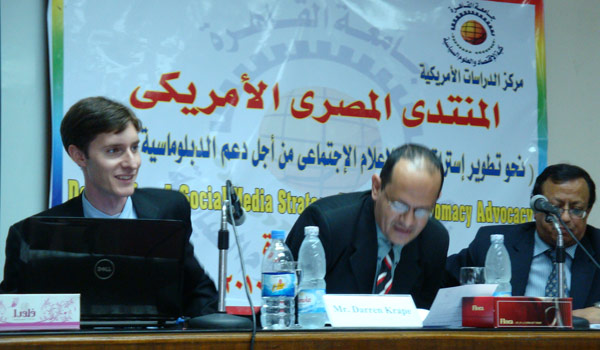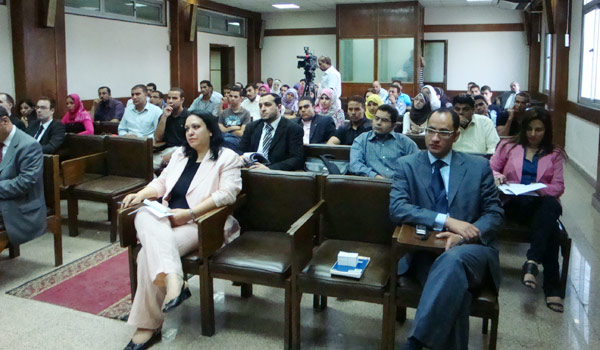Frontpage Interview’s guest today is Nonie Darwish, the co-founder of FormerMuslimsUnited.com and the author of Cruel and Usual Punishment.

FP: Nonie Darwish, welcome to Frontpage Interview.
Today I would like to discuss with you the photos we are exhibiting below of Cairo University graduates over the course of this era. There are the 1959 and 1978 photos compared to the 1995 and 2004 photos.
These pictures tell quite a story. Radical Islam has taken over even the minds of educated women in the Muslim world.
Since you’re from Egypt, I would like to get your take on this phenomenon. What’s going on here? One would think that people yearn for freedom rather than enslavement, but I guess life experience and human history tells us otherwise – when it comes to certain cultures. Being from Russia, I’m not too surprised with many Russians’ adoration of a thug despot like Putin and even their pining for Joseph Stalin.
Let’s first show these pics and then you share your thoughts on them.
1959:

1978:

1995:

2004:

Darwish: These photos represent the gradual but steady Islamic radicalization invading the Middle East and the rest of the world in the last three decades. I lived in Egypt until the year 1978 and have never wore a head cover, neither did my mother or grandmother. And this is thanks to a feminist movement that started in Cairo in 1919 under the leadership of the famous Egyptian feminist Hoda Shaarawi.
Shaarawi had attended women’s conferences in Europe and Turkey, which was undergoing major reforms by Mustafa Kemal Ataturk who wanted to be more like Europe and less like Muslim Arabia. Upon her return from a trip to Rome in 1923, Shaarawi performed a bold act that became the central symbol of her life: with the support of several upper class Egyptian women, she removed her veil in public, at the crowded Cairo train station. If such an act of defiance had happened today in Iran or even Egypt, she would be executed by the Iranian government and, as to Egypt, she could be killed by an Islamist on the street for defying or insulting Islam.
FP: What were the circumstances at that time that allowed Hoda Shaarawi to engage in this act of freedom of conscience?
Darwish: The reason she was not killed then but actually protected, and was able to start a reform movement in Egypt, was due to many reasons. First and most important was the existence of the British in the area. They helped protected the peace, minorities and equal rights. Second, the Egyptian king was moderate and wanted to bring modernity to Egypt. Third, this was the pre-petrodollar era of wealth in Saudi Arabia which was still weak and poor. Fourth, the Muslim Brotherhood was not yet in existence.
FP: How and why have things changed?
Darwish: Things started drastically changing after the Egyptian 1952 coup which ousted King Farouk and the British. Even though that coup appeared secular, none of the rebel ‘free officers’ were Christian Egyptians and almost all were members of the Muslim Brotherhood. However, the impact of the Muslim Brotherhood was delayed for a decade after the revolution when they attempted to assassinate Nasser who killed and imprisoned many members of its members. After Nasser died, the Muslim Brotherhood was empowered and with it the status of women. That coincided with Saudi petrodollars and the Iranian revolution, both of which brought power of Islamists to the whole area.
FP: Talk about these photos.
Darwish: The first 1959 photo reflects the influence of the Sharaawi feminist movement which existed until the death of Nasser. However, I must stress that the Egyptian feminist movement which started in 1919 and ended in the late 70’s, and which freed Egyptian women from the hijab, was more cosmetic than true Western-style liberation. Women still had to abide by Sharia law when it came to marriage and family matters and the culture still practiced segregation of the sexes and honor killing.
FP: So why did many of Egypt’s women, and educated women, become more radicalized and turn to the veil?
Darwish: As we see in the photos, the change was gradual, from 1959 of no head covers at all, to 2004 where almost all women, even some young girls, are wearing head covers. It must be noted that the Egyptian government, unlike Iran, does not force the head cover on women. Religious and social pressure on Egyptian women was the cause for the change. Feminists such as Shaarawi are now threatened and accused of apostasy, forcing the Egyptian feminist Nawal El Saadawi to leave the country. And now we see that some of the harshest critics of Muslim women reformists and human rights activists are none other than Muslim women.
The Muslim woman’s attire is the first thing noticeable in any Muslim country and is dictated by Islamic law. Some devout Muslim women chose to carry the torch of Islam by wearing the burqa on their own and exhibit their piety and devotion to their faith. Those were the ones who were rewarded and respected by society. The rest were left in a quagmire, either choose to be viewed as devout Muslims or as outcast rebel apostates. The majority chose the former since perception and image is extremely important in Muslim society where the uncovered head can be regarded as a defiant image of rebelliousness. After some acts of violence on the street against uncovered women, even some Christian girls found it safer to cover their heads so they were not noticed. How can feminism be practiced openly let alone survive under such conditions?
FP: What does the future hold?
Darwish: Muslim women in the Middle East have never developed a relationship of solidarity and support for their rights and freedoms. To the contrary, they often have hostile relationships where women often report other women when they violate social and religious taboos. Most have developed a holier than thou attitude towards other women. In such an atmosphere many found that if they want respect and even financial rewards, then they must be as radical, if not more radical then men. Some women do not even talk or communicate with women who are uncovered. This happened to me personally when I visited Egypt in 2001 and was wearing a conservative one piece bathing suit on the beach and a couple of covered up women in a group I was with would not talk to me.
In the beginning of our interview you asked why educated Egyptian women choose going back to the old days of the repression of the Burqa. The reasons are many and complex. Muslim women were left with two choices; to be in a constant struggle against Islamization and merciless rejection by society or if you can’t beat them, then join them. Another reason is nationalism, Arab pride and rejection of Western influence. Arab nationalism and pride came at the same time with the sudden wealth from petro-dollars which empowered radial Muslim countries such as Saudi Arabia.
Muslim countries have an obsession against free democracies that are prosperous and give women equal rights. Muslim leaders are having a hard time convincing their citizens that the Muslim system is better than Western democracies and thus the media and preaching is consumed with hate propaganda against the West, telling the West we reject your culture, the way you dress etc. I actually remember mosque sermons telling us how Western civilization is corrupt, satanic and we should not befriend them or imitate them in any way shape or form.
The return of the Burqa movement has also migrated to the West. When I moved to the US in 1978 I visited some Muslim girlfriends at UCLA and none of them wore the head cover. Many Muslims who moved to the States in the same year with me never wore the head cover back in Egypt. However, I have seen some of these immigrants a decade later with full Islamic attire. Even on US college campuses the movement is the same, Muslim students are proud to wear their Islamic outfit and refuse to assimilate. The trend is everywhere, just like in the Egyptian photos.
FP: So then what is the future of true women’s rights under Islam?
Darwish: Many believe that Islam’s treatment of women is on its way to being reformed and that it is just a matter of time until Muslim women will wise up, figure what must be done, stand together in unity and march for their equality and human rights. That happened to women in the West, so why not to Muslim women in the Middle East?
There is a major difference: in the West, Christianity did not come with thousands of pages of Jesus’s laws regulating every detail in a Christian’s life to control every Christian. Jesus did not call women deficient in intelligence and lacking in religion or that they are toys, slaves in a marriage. Very simply Western feminists were not confronted with the many dead ends that the Muslim feminist is confronting.
Many also believe that the reformation of Sharia and Islam itself will come from its most oppressed group: women. I disagree with that view, partially because the woman is largely the object of extreme regulation in Sharia (Allah’s law).
Expecting Muslim women to be behind the reformation of Islam and Sharia, is like asking slaves to end their own slavery without their masters’ approval or asking prisoners to get out of prison without the guards opening the doors. That is the reason Muslim Feminism has not succeeded in getting the majority of Muslim women on board. A Muslim woman’s inferior status in Muslim society has gone too deep and has become institutionalized. Muslim societies, cultures and institutions are dependent on it. For Muslim women to simply revolt against Islamic gender apartheid will be regarded as anti-man, anti-family, anti-religion, anti-government and worst of all, anti-Allah himself.
FP: Nonie Darwish, thank you for joining us. And again, thank you for being the brave freedom fighter that you are.
And I encourage all our readers to get their hands on Nonie Darwish’s book
